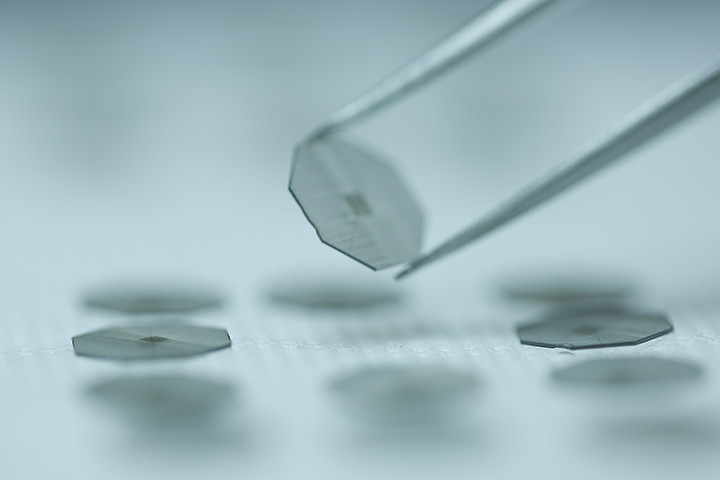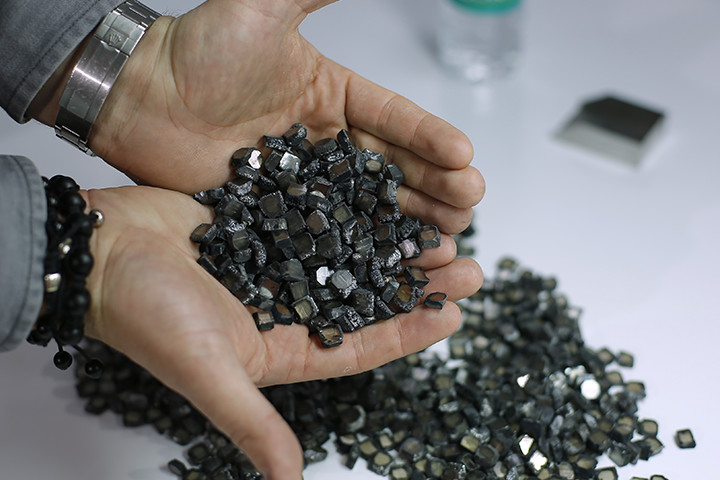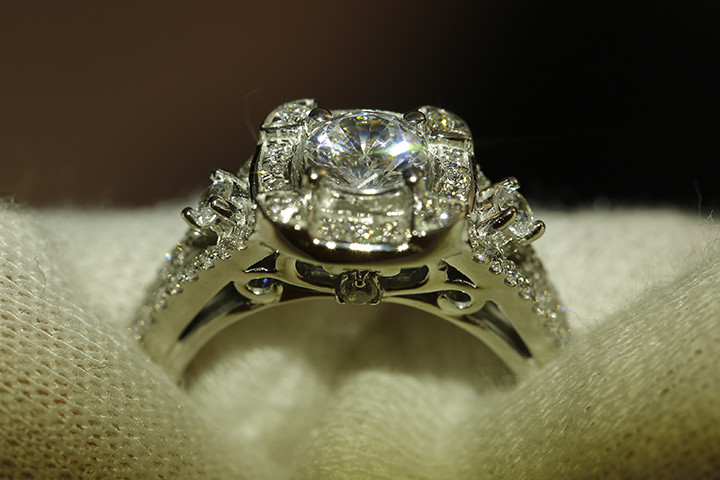Lab Grown Diamonds in Rockford, IL
A Whole New Breed of Diamond
Clodius Created Diamonds are created under pressure with modern technology. They are chemically, structurally and visibly identical to the finest diamonds mined from the crust of the earth. With Clodius Created Diamonds you can now afford a larger more beautiful diamond than ever before!
Stop in today to see the Clodius Created Diamond side by side with a natural mined diamond. Whichever diamond you choose, mined or created, you’ll always get more diamond for your dollar at Clodius and Company Jewelers.
Clodius Created Diamonds Are So Amazing Jewelers Need Highly Specialized Instruments to Tell the Difference!
Frequently Asked Questions
Clodius Created Diamonds are laboratory-grown above the ground and supplied to Clodius & Co. by several diamond producing companies.
Created diamonds are made by advanced human technology that replicates the conditions under which diamonds (or rough diamonds) were formed under the ground. The rough created diamonds are then cut and polished using the same tools and techniques used to cut mined diamonds.
General Electric produced the first commercially successful lab-grown diamond in 1954. This gave rise to an industrial man-made diamond industry that for decades was represented by two main producers, GE Superabrasives and De Beers Industrial Diamonds. Lab-grown diamonds are used commercially in a wide range of applications including: optics, power transmission, water treatment, semi-conductors, sensors, medical and technology. Only in recent years has the production of gem-quality diamonds been achieved.
Our created diamonds are produced by utilizing two gem-quality diamond creation processes: Chemical Vapor Deposition (CVD) and High Pressure High Temperature (HPHT).
With CVD, a small diamond seed is placed in an environment that contains carbon and then put in a low-pressure microwave chamber. Hydrogen and methane gases are introduced to launch the growing process. A plasma ball ignites; carbon atoms rain down on the seed; and the diamond begins to grow layer by layer.
With HPHT, a small diamond seed is placed in carbon and then put under very high pressure and temperature to grow the diamond. In this environment, the pure carbon melts and begins to form into a diamond around the starter seed. Approximately ten to twelve weeks later, a diamond has grown into one that is ready for cutting and polishing.
We offer the full range of colors and clarities that are available from mined diamonds. The processes that grow these diamonds, however, tend to produce higher quality diamonds than the more modest grades, and this will be represented in the ones that we stock.
The majority of our diamonds are cut as round brilliants which is reflective of the highest demand. We also can, by request, supply princess and emerald cut diamonds as well as oval, pear, cushion and radiant. Many of these special shapes will be grown just for you.
Lab created diamonds are available from small accent sizes to just over ten carats. The largest created diamond is 155 carats.
Yes. Currently, in addition to “colorless” diamonds, we also offer yellow, orange, blue and pink created diamonds. As is true in mined diamonds, the blue created diamond is the rarest.
Yes! It is a “real” diamond. Everything about it is real. A lab created diamond is a diamond with the same chemical, physical and optical properties as mined diamonds. Ice serves as a great example. We all make “created” ice by putting water into an ice cube tray and popping it into the freezer. Natural ice is created by the weather. “Created” ice cubes are real ice, and they’re the same as natural ice. The only difference is that we invented an environment (the freezer) that makes the water freeze. Ice cubes created in your freezer are 100 percent ice cubes, and diamonds created in a lab are 100 percent real diamonds.
It is impossible to differentiate between a lab-grown diamond and a mined diamond just by looking at it. Even a trained gemologist with a loupe or a microscope cannot often positively differentiate a lab-grown diamond from a mined diamond based on inclusions alone. In some cases, only a gemological laboratory with expensive and specific high-tech equipment can positively differentiate between the two.
Yes! Clodius & Co has invested in the latest generation of laboratory instruments and can positively identify a diamond as grown naturally, or created above ground in a laboratory.
Yes. Clodius Created Diamonds are graded to the same standards as mined diamonds by leading independent gemological laboratories. We currently use both GCAL and IGI as our grading laboratories.
Created and earth-mined diamonds are identical. The only difference is the origin. Both have the same physical, chemical and optical properties and emerge as rough diamonds. Both have the same hardness, specific gravity, refractive index, and dispersion. They are polished using the same equipment and techniques, and have the same brilliance, fire and sparkle. Both are, in fact, diamonds.
Our Clodius Created Diamonds, loose and center, come with a laboratory grading report. If an appraisal is needed, we can supply all appraisal documents required for insurance or other purposes.
- A Clodius Created Diamond is roughly thirty percent less than the price of a mined diamond.
- A Clodius Created Diamond is sustainable. Sustainability means that the earth's natural resources are not disrupted for future generations as a result of producing lab created diamonds.
- A Clodius Created Diamond is more environmentally friendly. Studies have proven that the carbon footprint from the production of a lab created diamond is significantly less than the carbon footprint of a mined diamond.
This depends on how you feel about it! The laws of nature remain the same when growing fine quality diamonds, whether below the earth or above. Lab created diamonds, just like earth grown, are individually unique.
Created diamonds are identical to mined diamonds. The formation of ice is a great analogy. Nature’s ice is formed outside in the winter when water freezes. Kitchen created ice is grown in your freezer when water freezes. In either case the ice is the same.
— Mark Clodius



















